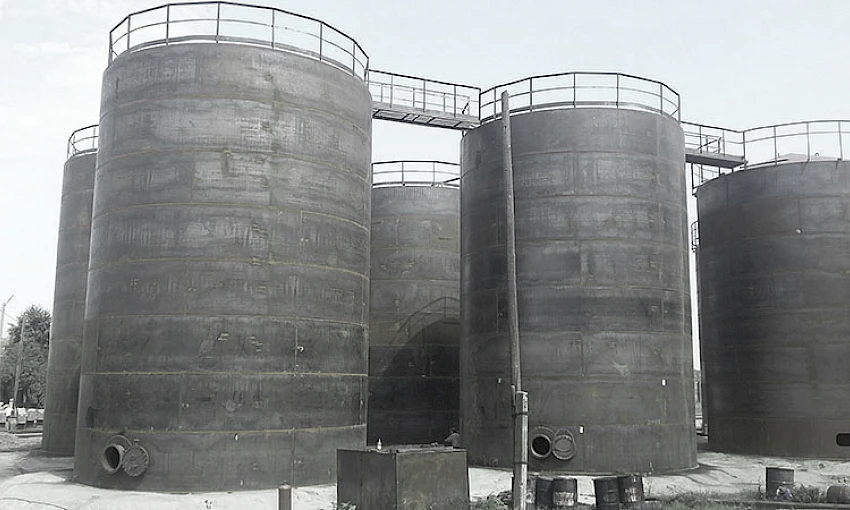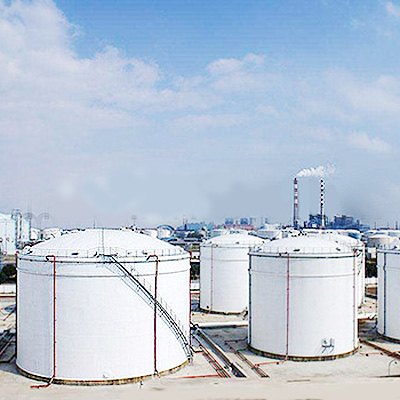Comprehensive API 650 Welding Inspection Procedures Every Quality Specialist Should Know
Wiki Article
A Step-by-Step Consider the Installment Process of Welding Examination Techniques
Welding evaluation is a vital process that assures structural stability and safety. The setup of evaluation strategies involves a number of systematic actions, each essential to attaining reputable outcomes. From preparation and device selection to performing non-destructive and visual tests, each phase needs cautious interest. Recognizing these procedures can greatly improve quality control in welding tasks. What challenges develop in implementing these methods, and how can they be properly addressed?Comprehending the Value of Welding Examination
Welding evaluation is a crucial element of making sure architectural honesty and security in construction and manufacturing procedures. This method involves assessing welded joints for flaws, making sure that they meet certain criteria and laws. By methodically determining weld top quality, examiners can determine problems such as fractures, voids, and insufficient combination, which can jeopardize the stamina and longevity of frameworks.The significance of welding assessment prolongs beyond immediate safety issues; it assists stop expensive failures and potential hazards in the long term. Effective inspection strategies foster conformity with industry requirements, thus enhancing the total integrity of welded components. Additionally, a durable evaluation process contributes to keeping the credibility of building contractors and suppliers, as it guarantees clients of the top quality of their projects. Inevitably, recognizing the value of welding inspection is crucial for promoting secure building practices and making certain the durability of vital facilities and items.
Selecting the Right Equipment for Inspection
When selecting the proper devices for evaluation, it is necessary to ponder the particular demands of the welding procedure and the materials entailed. Different examination methods, such as visual, ultrasonic, and radiographic screening, necessitate unique devices customized to their distinct demands. For aesthetic evaluations, devices like multiplying glasses and calipers are vital for assessing weld top quality. Ultrasonic screening calls for specialized equipment with the ability of transmitting and getting acoustic waves to identify internal defects. Radiographic screening, on the other hand, utilizes X-ray or gamma-ray sources alongside delicate film or electronic detectors to expose incongruities.
In addition, individual protective tools (PPE) is vital to guarantee the safety of inspectors during analyses. Selecting the right devices not just improves the accuracy of inspections however also adds to the general stability and security of the welding job. As a result, a comprehensive understanding of readily available devices and their applications is essential for effective welding inspection.
Getting ready for the Inspection Refine
Before initiating the inspection procedure, it is necessary to establish a detailed strategy that describes the scope and purposes of the analysis. This strategy should consist of certain requirements that define what constitutes appropriate quality in the welding job being checked. Recognizing the appropriate codes and criteria is crucial, as they will lead the examination standards and approaches.In addition, workers associated with the examination has to be effectively trained and accredited in welding inspection strategies to assure integrity and precision. A list can be useful in organizing the numerous aspects of the examination, ranging from equipment preparedness to environmental conditions that might impact the evaluation.

Logistical considerations such as organizing, readily available resources, and communication between team members must be resolved. By preparing methodically, examiners can enhance the efficiency of the evaluation and ensure that all essential factors are duly considered before waging the examination itself.
Performing Aesthetic Assessments

Conducting aesthetic assessments is a vital action in the welding examination procedure, needing mindful preparation to guarantee effective evaluation. Assessors should be familiar with crucial problem indicators that can signal prospective issues in weld top quality. By concentrating on these elements, one can enhance the total dependability of the examination results.
Preparing for Visual Examination
Aesthetic evaluation functions as a vital initial step in the welding evaluation procedure, assuring that any possible defects are identified early (API 650 Welding Inspection). Proper preparation is vital for efficient aesthetic inspection. Inspectors should start by reviewing relevant paperwork, including welding procedures and requirements, to recognize the project needs. They need to collect needed tools, such as multiplying glasses, flashlights, and proper personal protective tools (PPE) A complete assessment of the inspection area is crucial; examiners should verify it is tidy and cost-free of obstructions. Furthermore, it is necessary to establish ideal lights conditions to improve visibility of welds. By taking these primary actions, assessors can create a setting conducive to determining disparities and assuring the integrity of the bonded frameworksKey Defect Indicators
An extensive understanding of essential issue indicators is crucial during visual assessments to guarantee the high quality and safety and security of bonded joints. Examiners ought to concentrate on particular indications such as cracks, porosity, damages, and incomplete blend. Splits might look like sharp lines and can endanger architectural integrity. Porosity manifests as tiny holes that can deteriorate weld stamina. Undercuts, which are grooves along the weld edge, can bring about stress focus. Incomplete fusion indicates that the weld steel did not appropriately bond with the base material, resulting in a weak joint. By systematically determining these defects, inspectors can determine conformity with sector requirements and boost the general dependability of welded structures, inevitably adding to much safer operational conditions.Carrying Out Non-Destructive Checking Techniques

Countless non-destructive testing (NDT) techniques are essential to ensuring the integrity of bonded structures without compromising their functionality. These methods allow inspectors to examine weld quality and spot problems without triggering damages to the materials being tested. Usual NDT methods include ultrasonic testing, radiographic testing, magnetic particle testing, and color penetrant screening. Each approach offers a specific function, attending to different sorts of flaws such as fractures, porosity, or insufficient combination.
Carrying out NDT techniques needs a methodical method, beginning with choosing link the suitable method based upon the materials and the nature of the weld. Training workers in these strategies is crucial for accurate results. Furthermore, developing clear procedures and criteria guarantees consistency throughout the assessment process. By incorporating NDT right into the welding examination workflow, companies can enhance the dependability of their products while decreasing possible dangers related to architectural failings. This positive method ultimately contributes to keeping safety and security and top quality standards in welded constructions.
Recording and Analyzing Evaluation Results
Effective documentation and analysis of assessment results are important elements of the welding inspection process. Exact documents of examination searchings for serve try this web-site as a reference for quality control and compliance with market standards. API 650 Welding Inspection. Examiners must use organized types or electronic systems to log information such as the type of weld, assessment approaches utilized, and any kind of inconsistencies identified throughout the analysisAs soon as information is collected, detailed analysis is crucial. This involves contrasting outcomes versus developed standards to determine fads or reoccuring issues. Analytical tools might be used to evaluate problems and examine their influence on total weld high quality.
Efficient interaction of searchings for to appropriate stakeholders is important. Recaps and reports need to be clear and concise, highlighting key understandings and recommendations for rehabilitative activities. By methodically documenting and evaluating inspection outcomes, organizations can cultivate continuous renovation in welding methods and boost item stability.
Frequently Asked Concerns
What Credentials Are Needed to Come To Be a Welding Examiner?
To end up being a welding assessor, one normally needs pertinent qualifications such as AWS CWI, together with experience in welding methods, knowledge of welding codes, and proficiency in assessment strategies to guarantee high quality and security requirements.Exactly How Commonly Should Welding Inspections Be Conducted?
Welding inspections should be conducted consistently, commonly after each weld is finished, and periodically throughout tasks. Aspects such as project complexity, industry requirements, and regulative needs can affect the regularity of these evaluations.What Is the Cost of Welding Inspection Providers?
The cost of welding examination services differs considerably based on variables such as job area, dimension, and complexity. Typically, costs range from $100 to $150 per hour, with additional costs for specialized testing and qualifications.Exist Certifications for Welding Inspectors?
Yes, there are numerous accreditations for welding inspectors, including those supplied by the American Welding Culture (AWS) and the International Institute of Welding (IIW) These accreditations assure inspectors possess the needed skills and expertise for efficient analyses.
Just how Do I Choose an Assessment Provider?
To pick an assessment solution supplier, one should examine qualifications, experience, market reputation, and client testimonials. Furthermore, contrasting service offerings and pricing can help ensure the picked provider fulfills certain job needs effectively.Additionally, personnel involved in the examination needs to be adequately educated and certified in welding assessment strategies to assure reliability and precision. Performing visual assessments is a crucial action in the welding assessment procedure, calling for cautious preparation to guarantee API 650 Welding Inspection effective examination. Aesthetic assessment serves as an important initial action in the welding evaluation procedure, assuring that any kind of potential flaws are recognized early. Efficient paperwork and evaluation of assessment outcomes are essential parts of the welding evaluation process. Welding assessments should be performed on a regular basis, generally after each weld is completed, and occasionally during tasks.
Report this wiki page